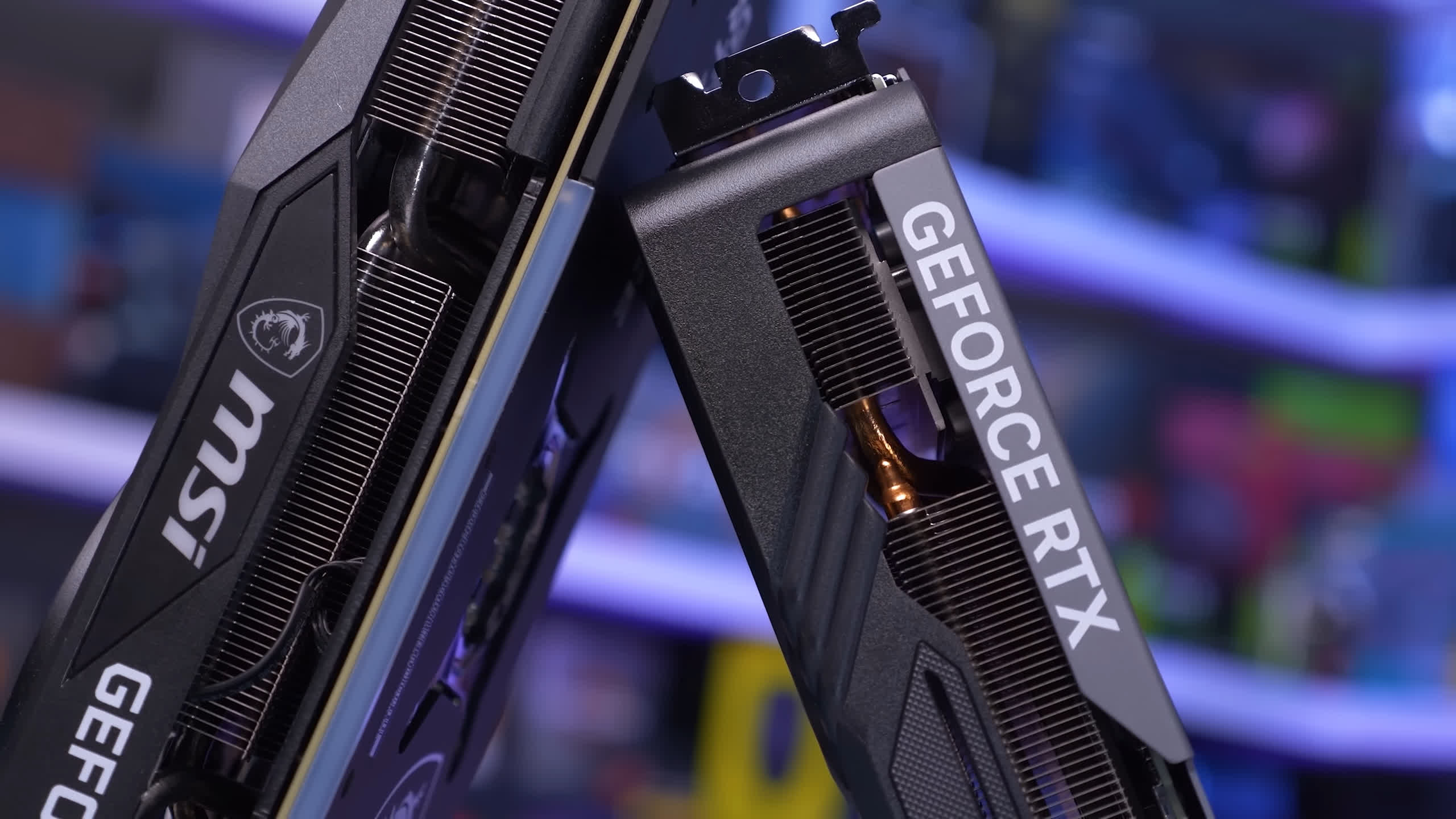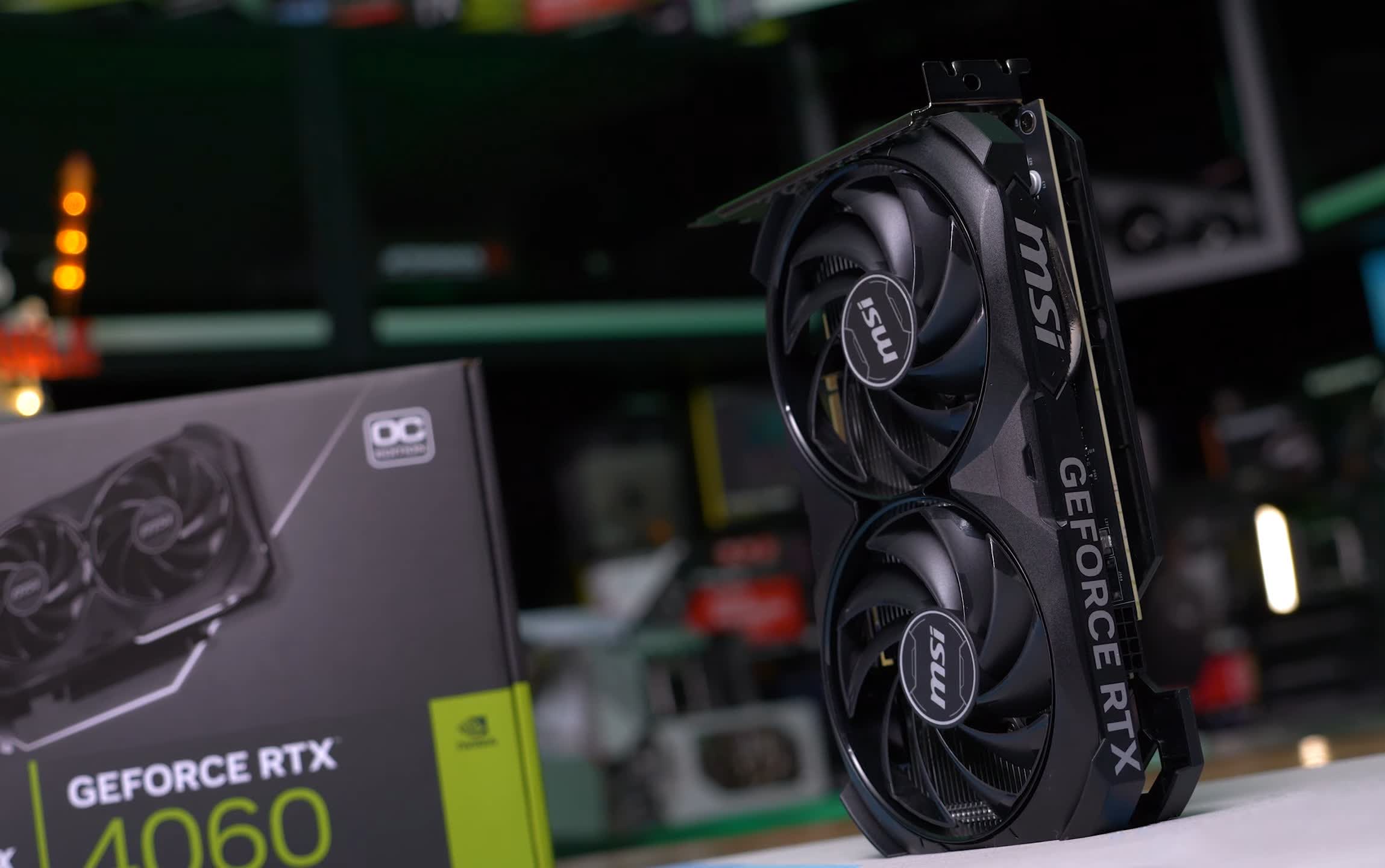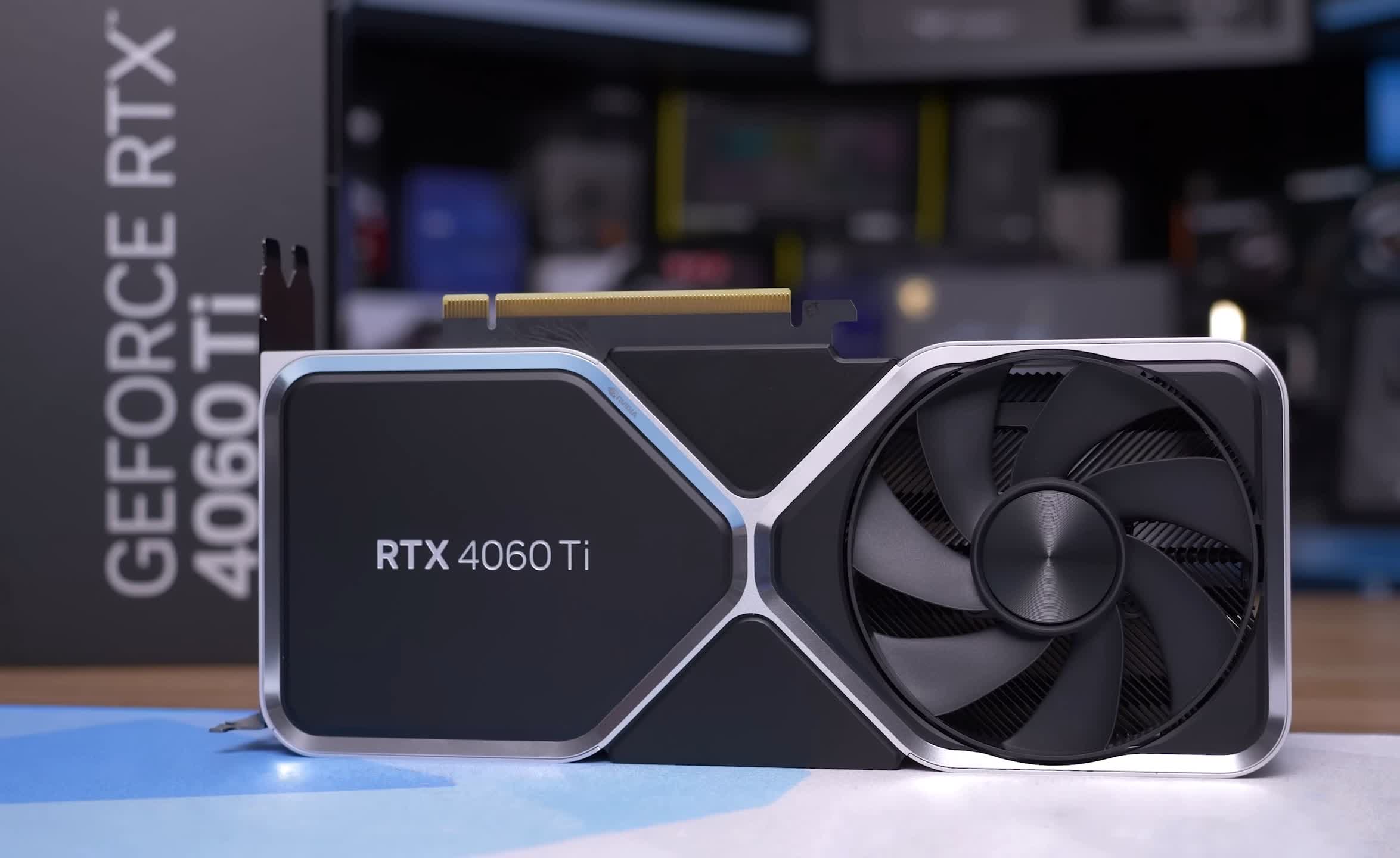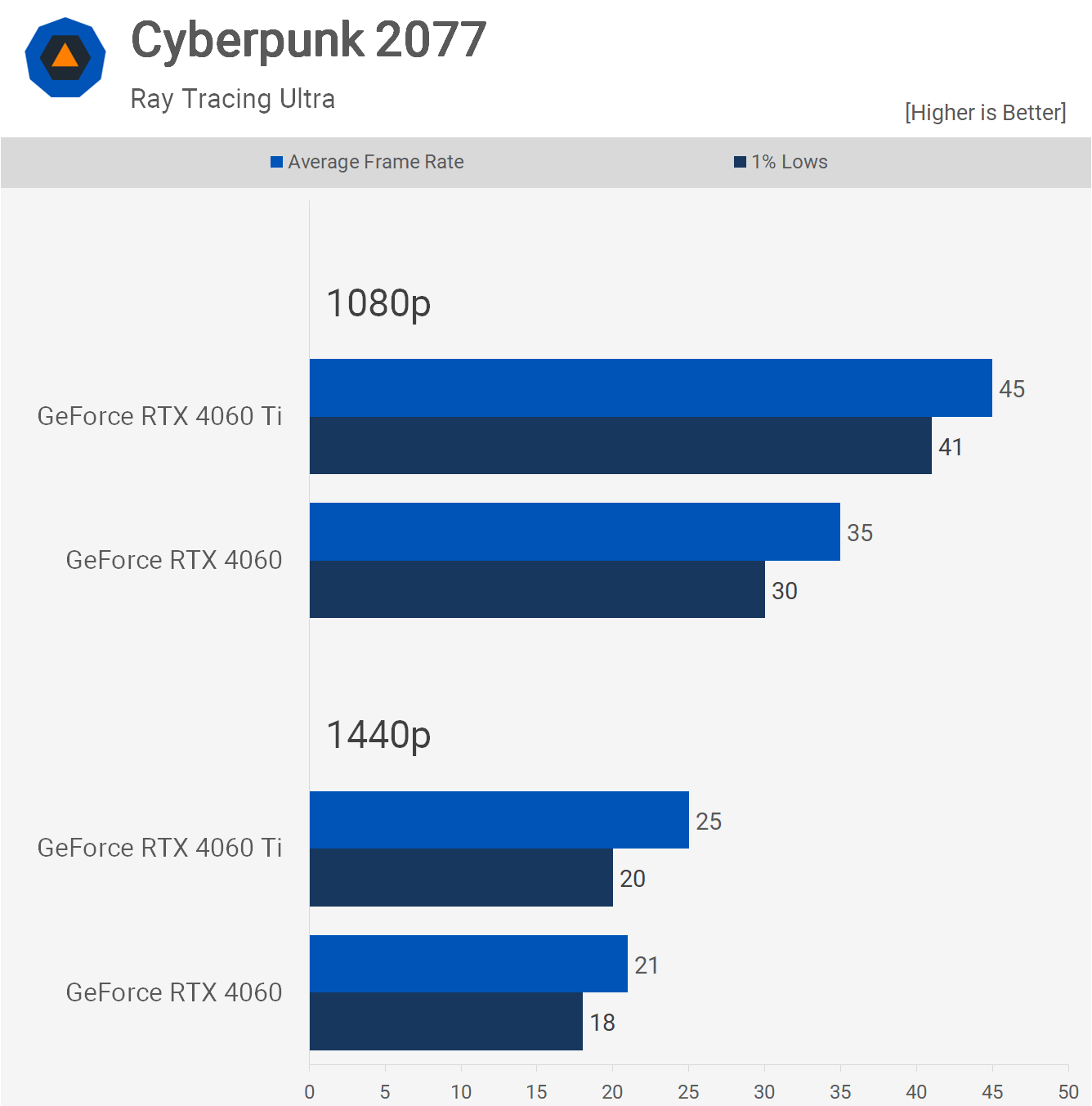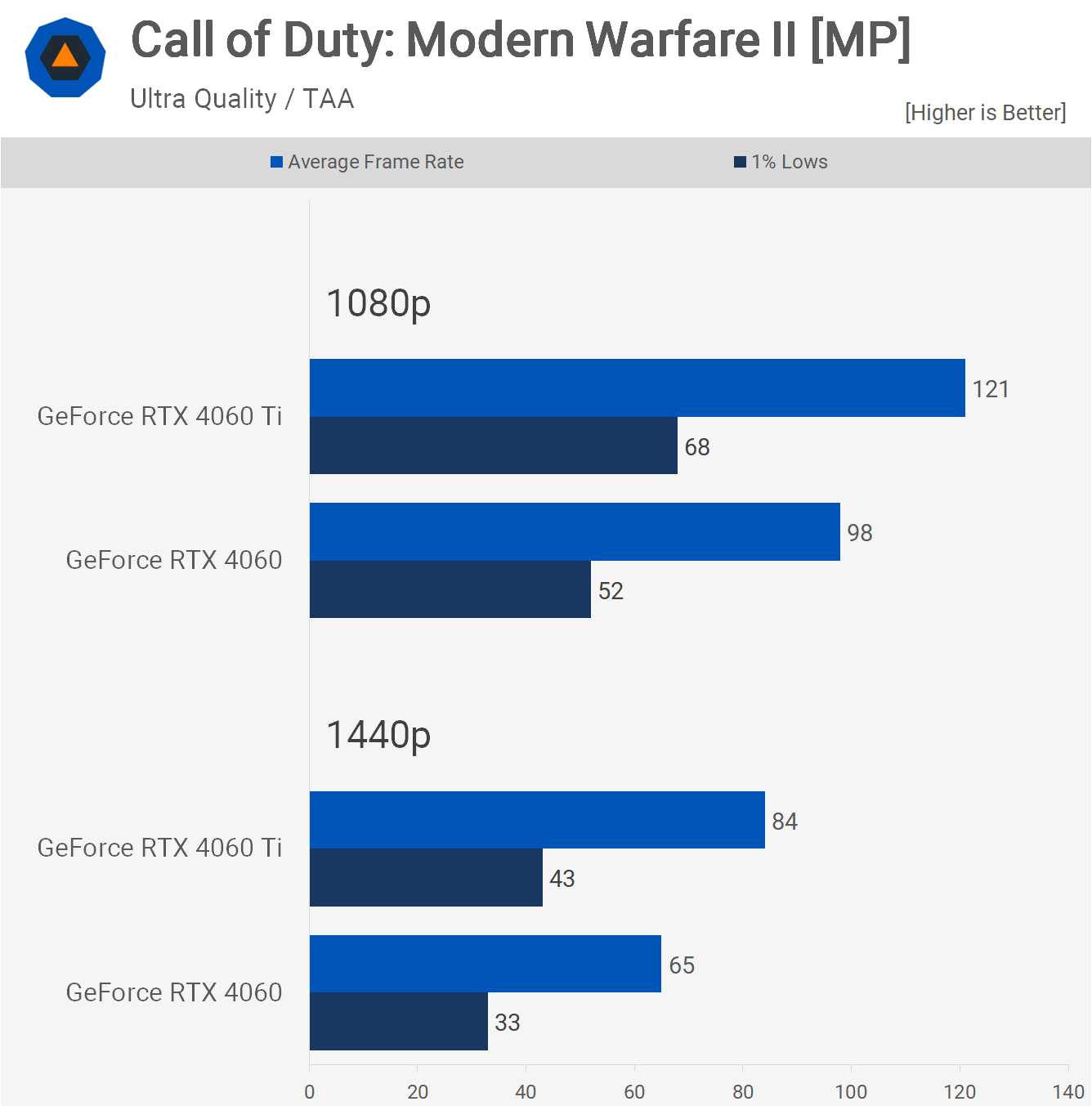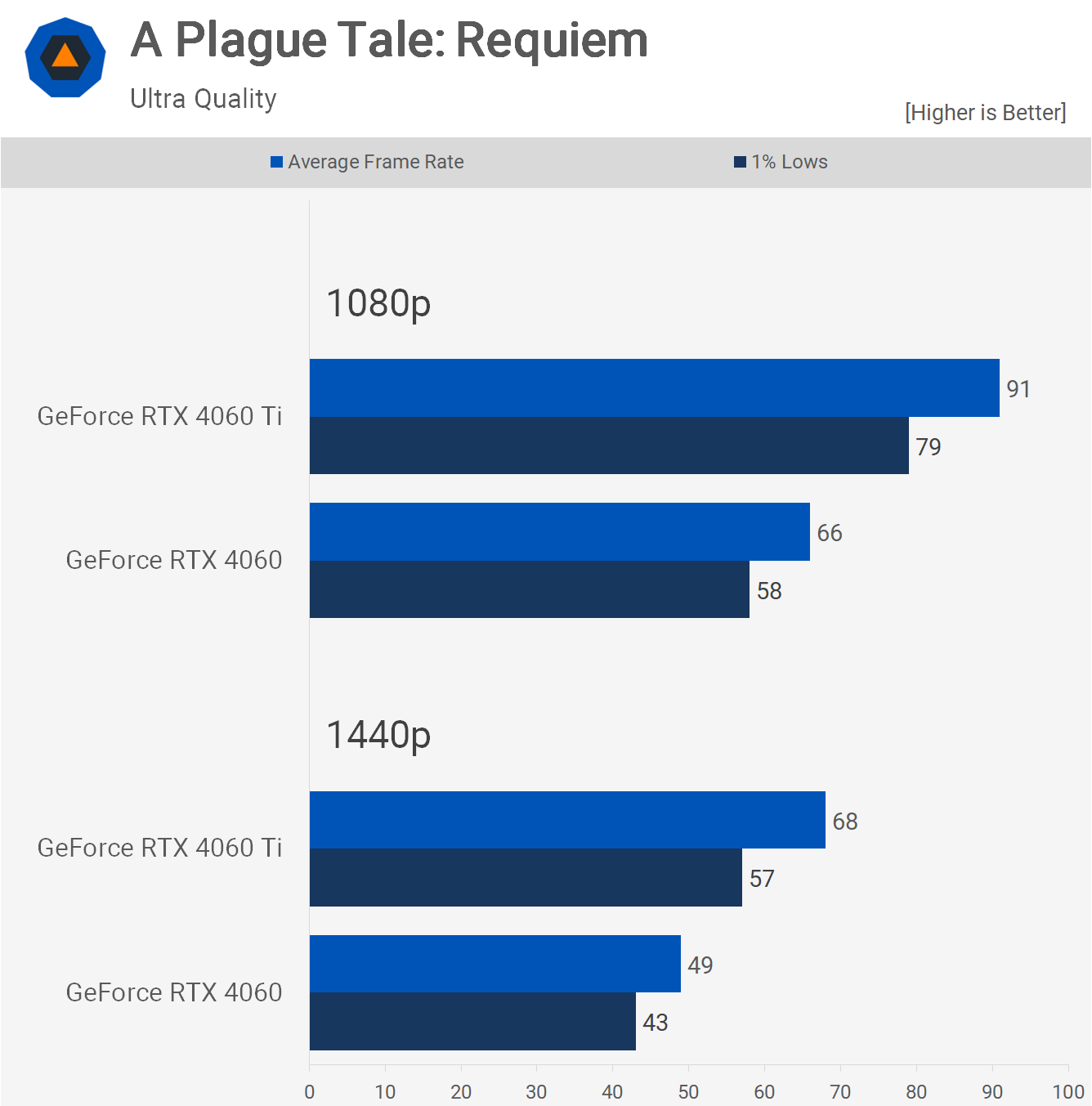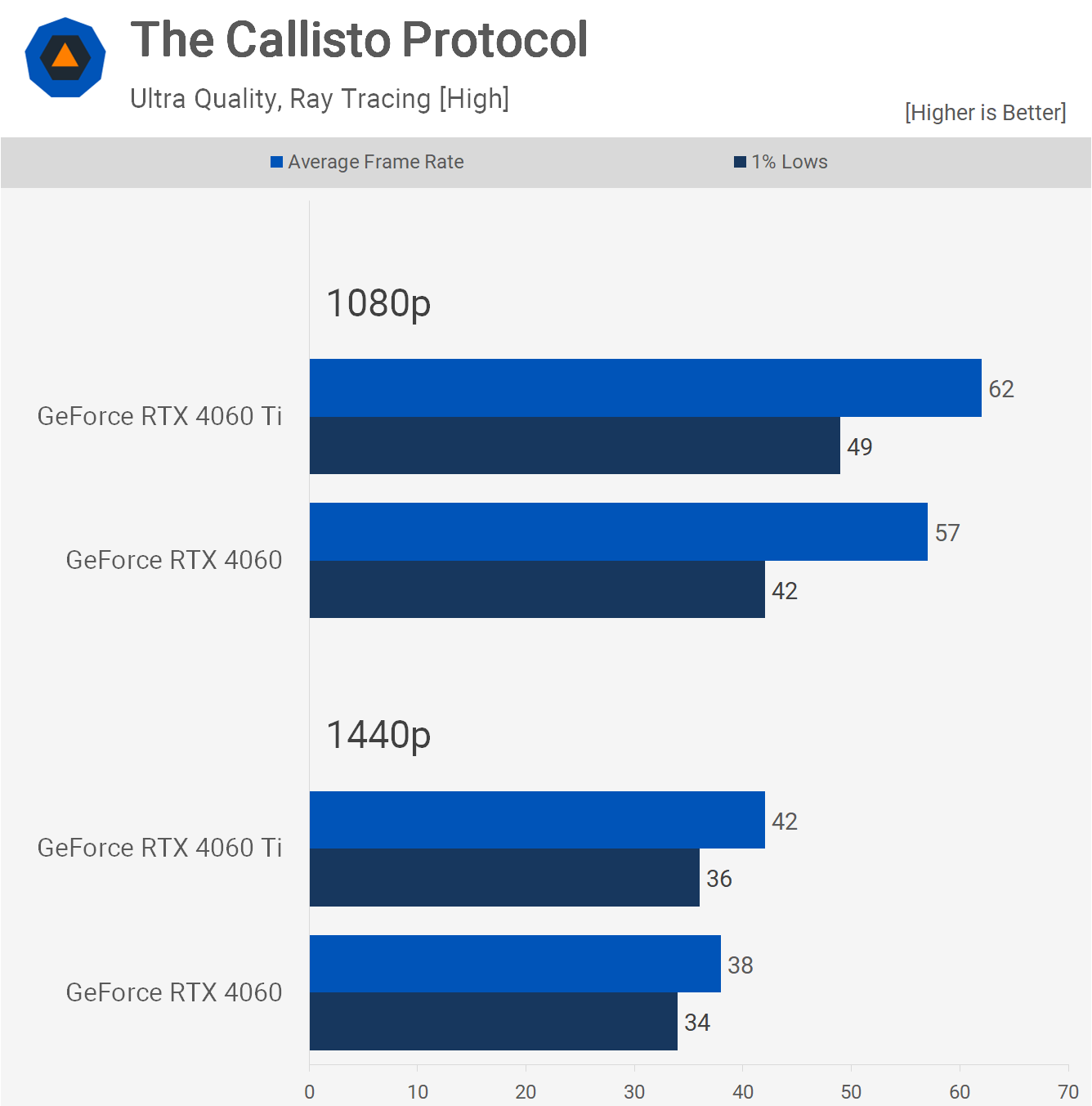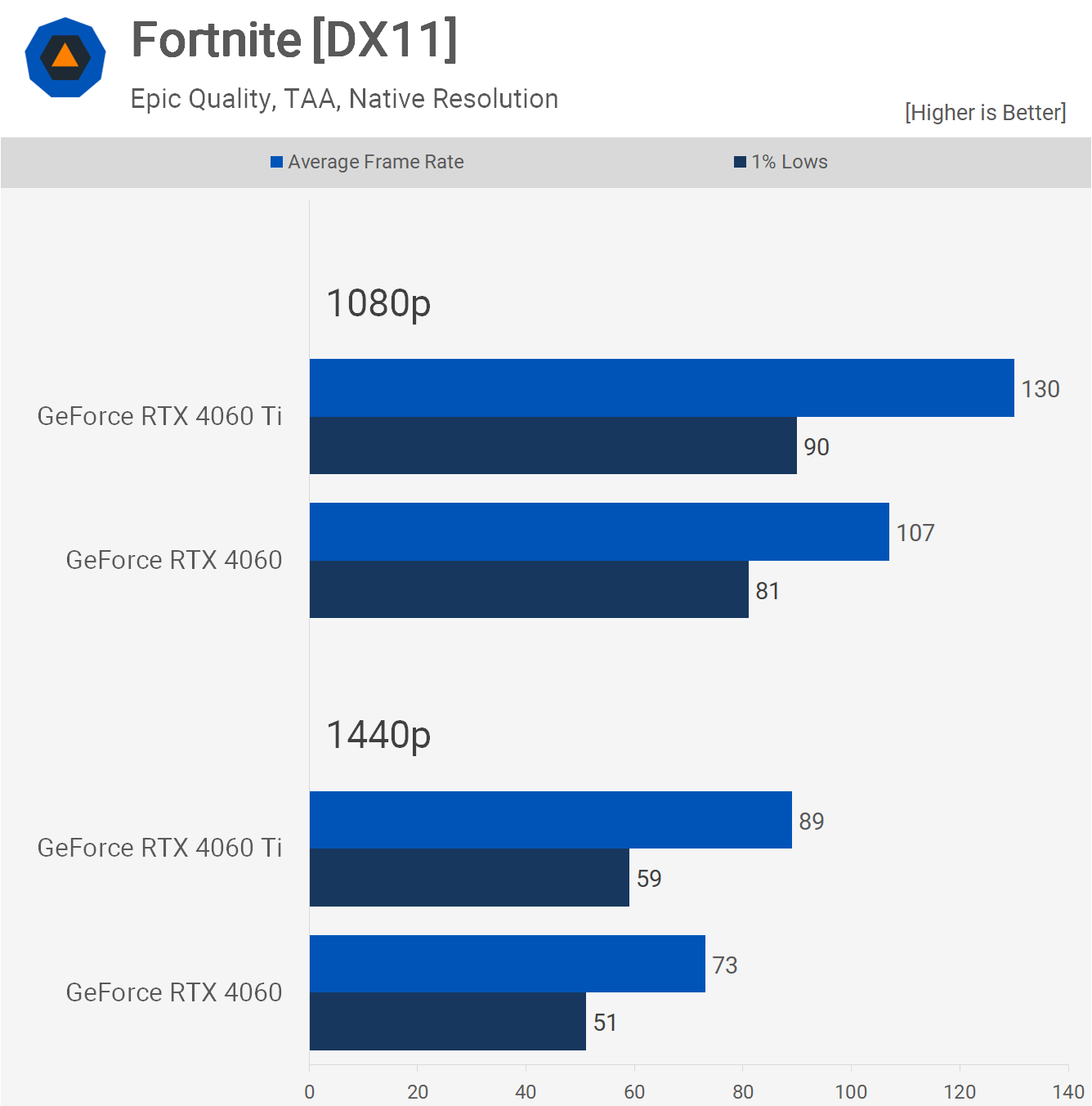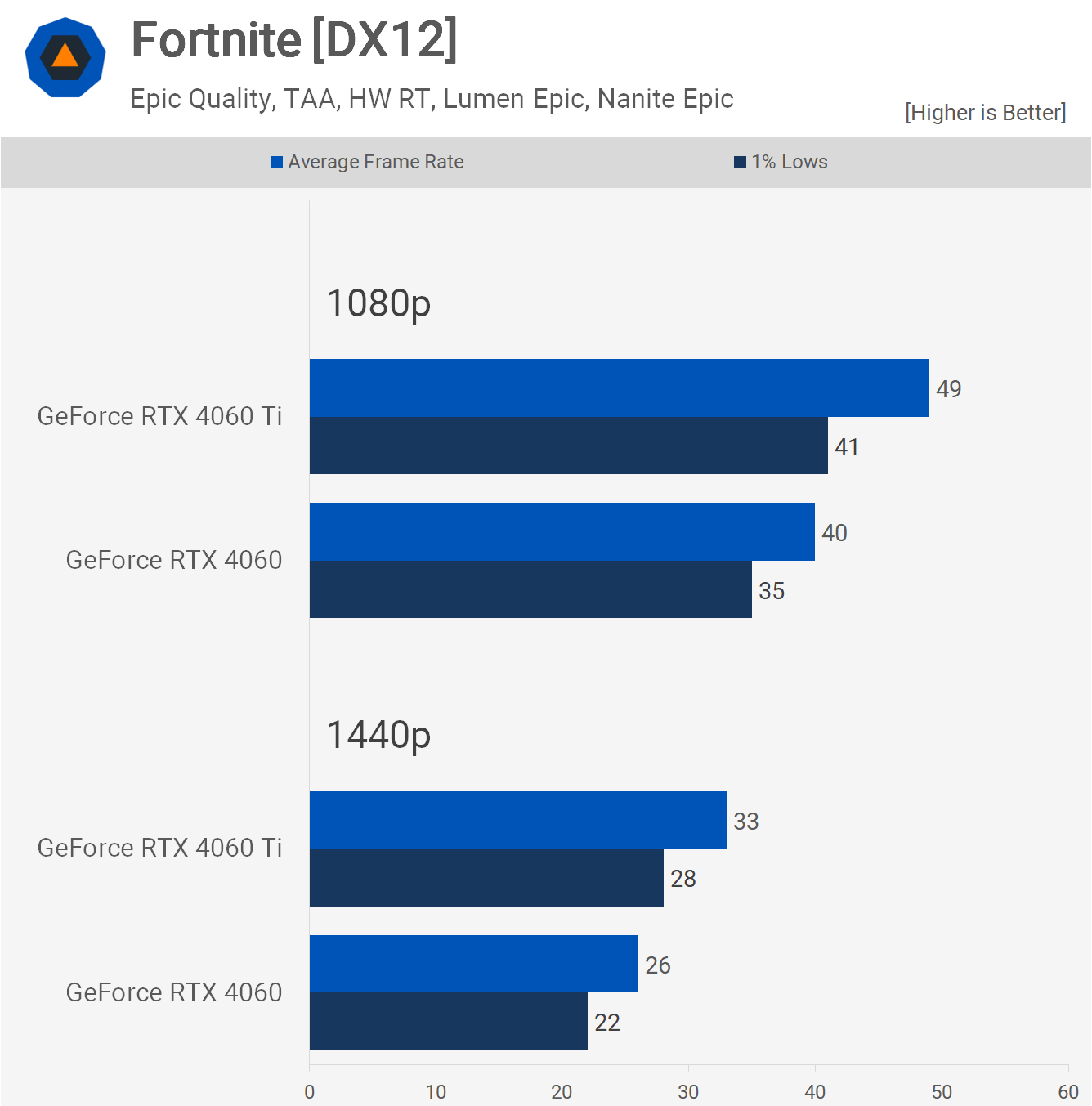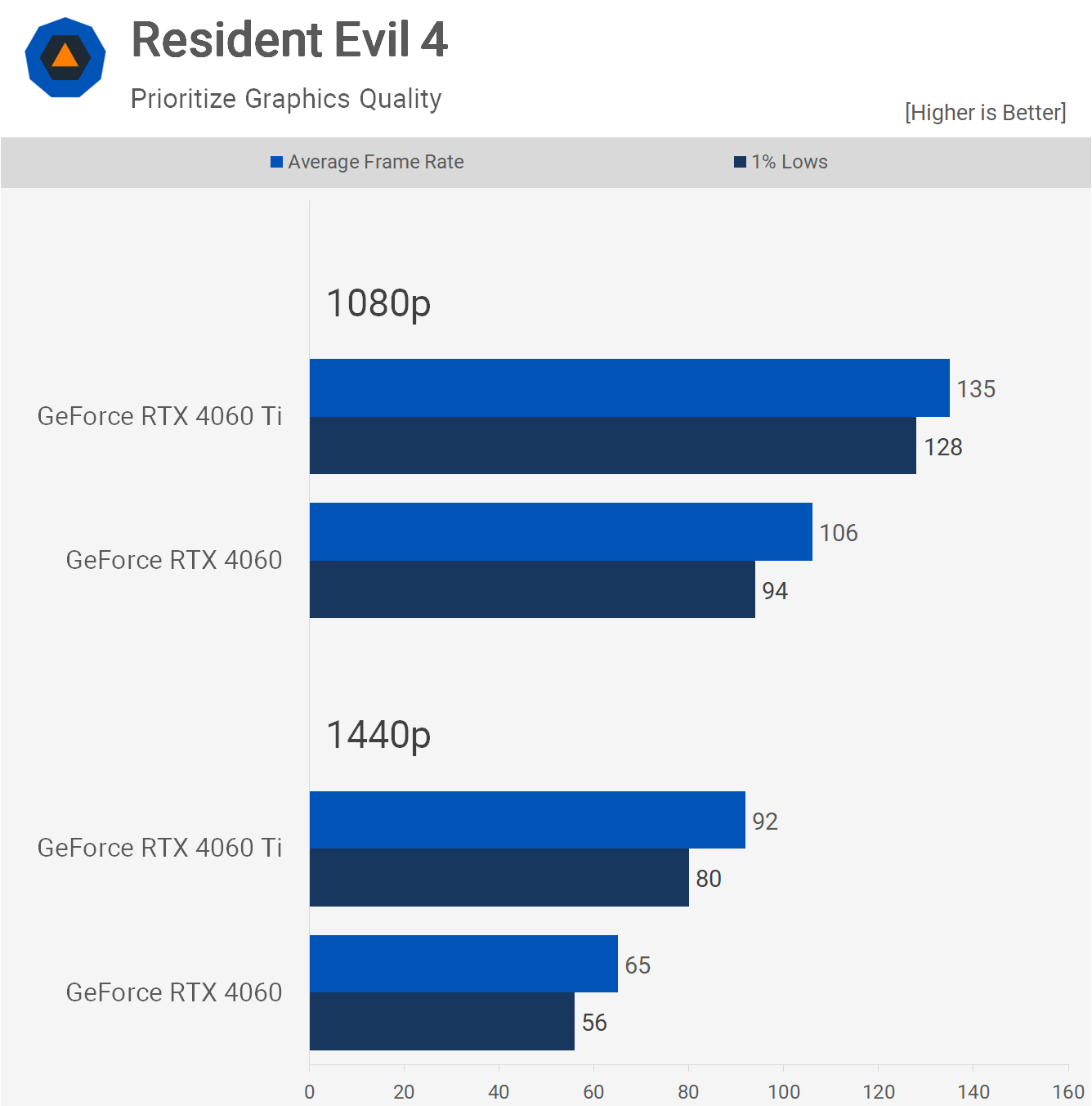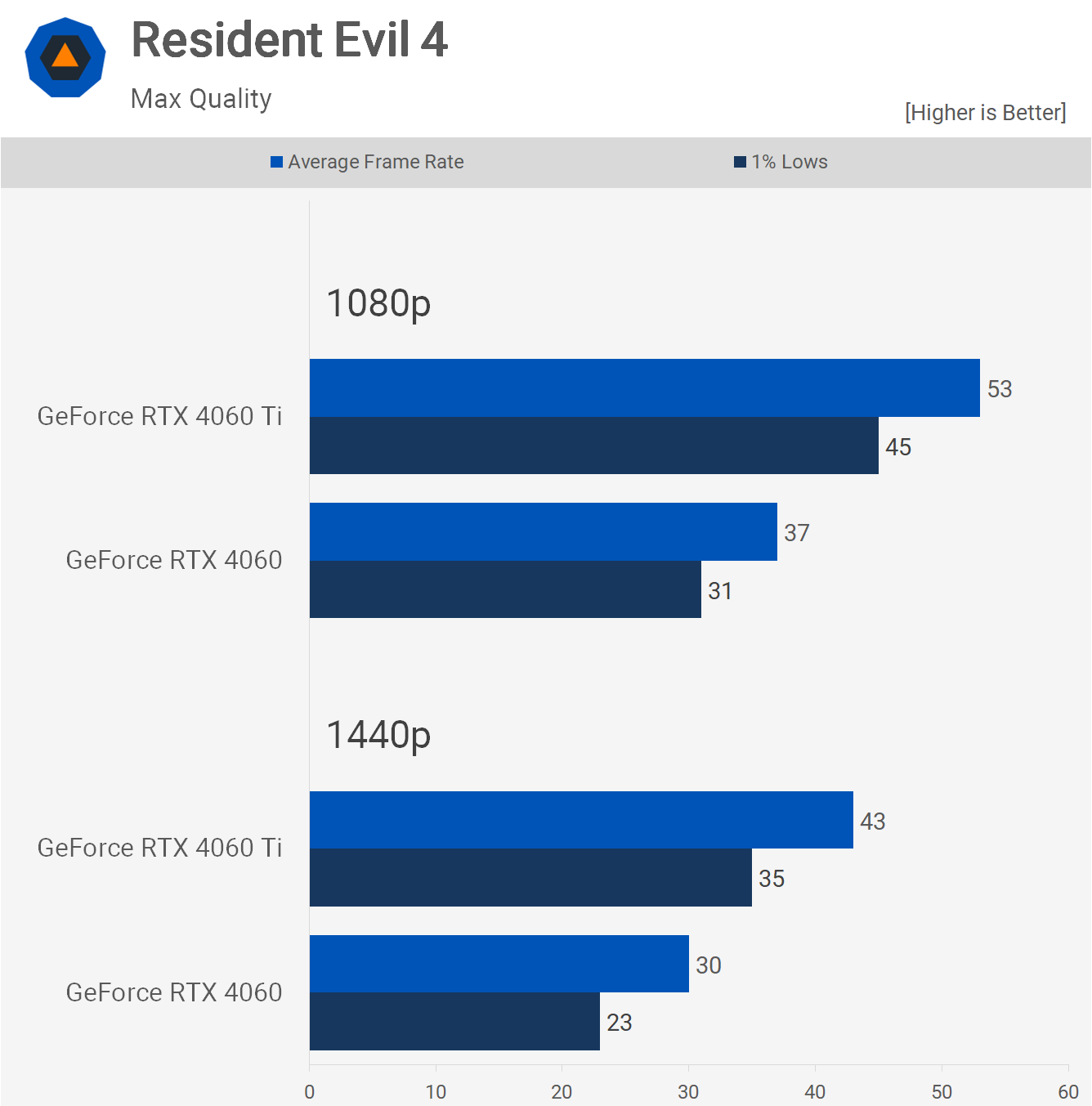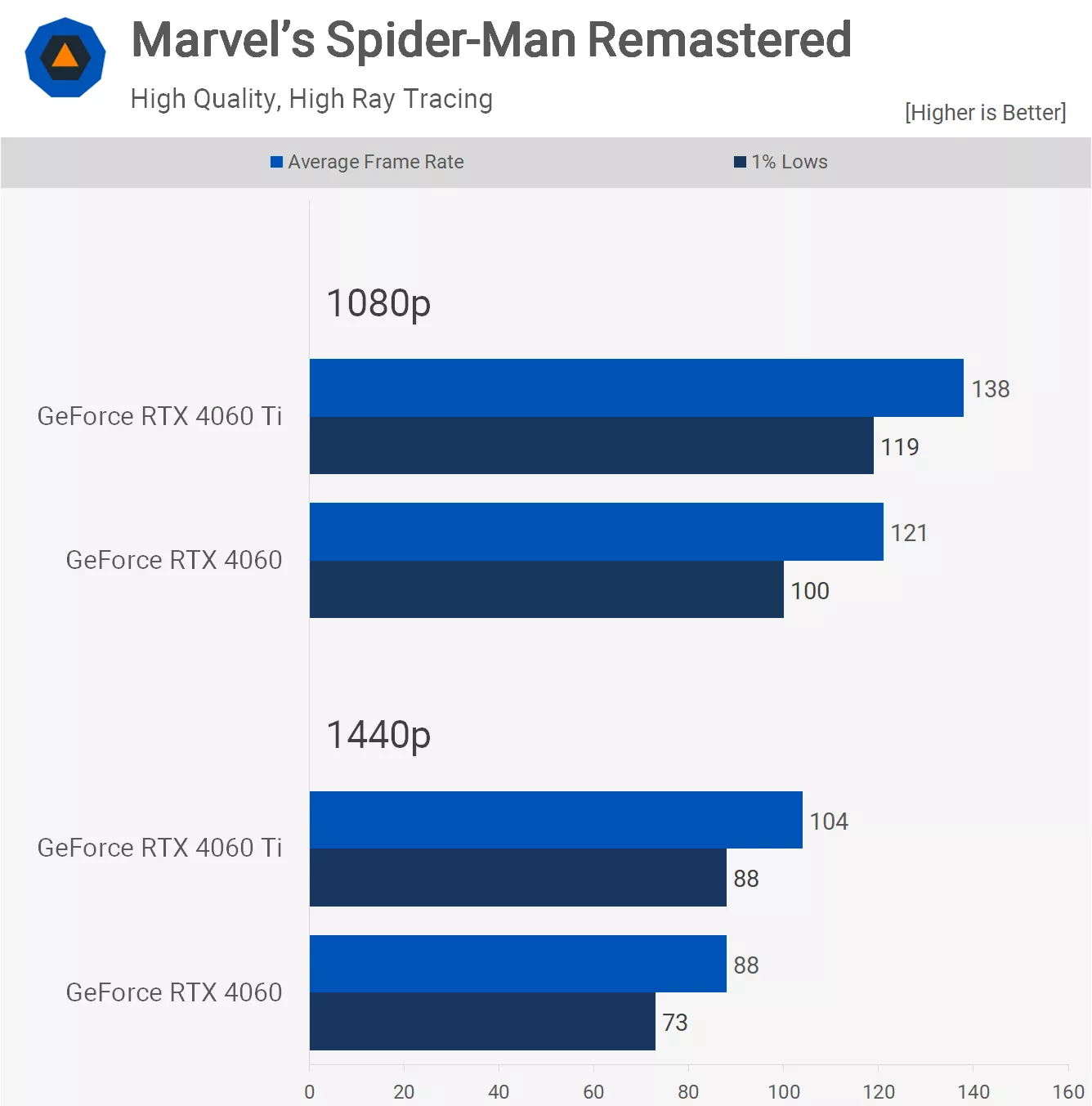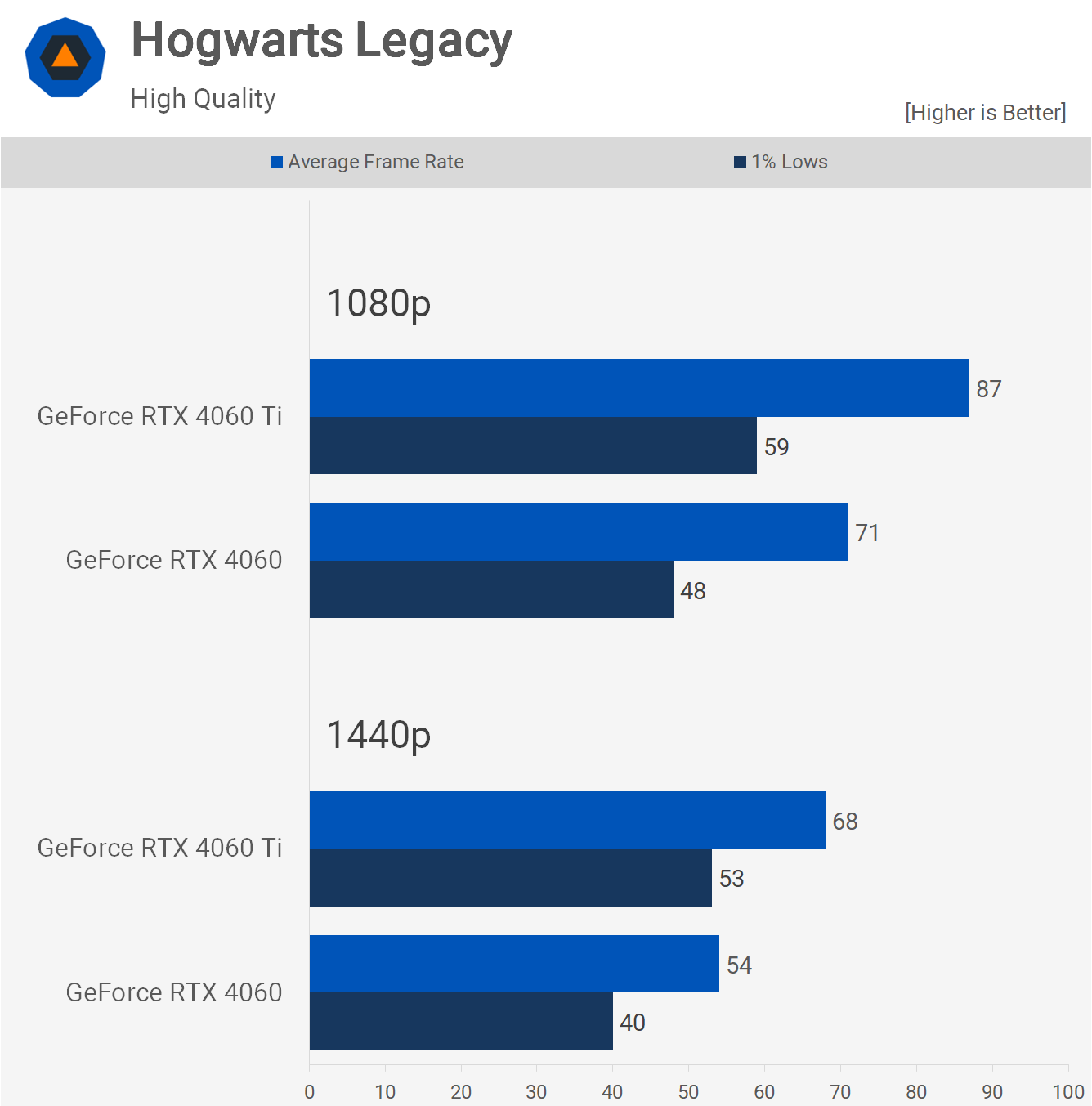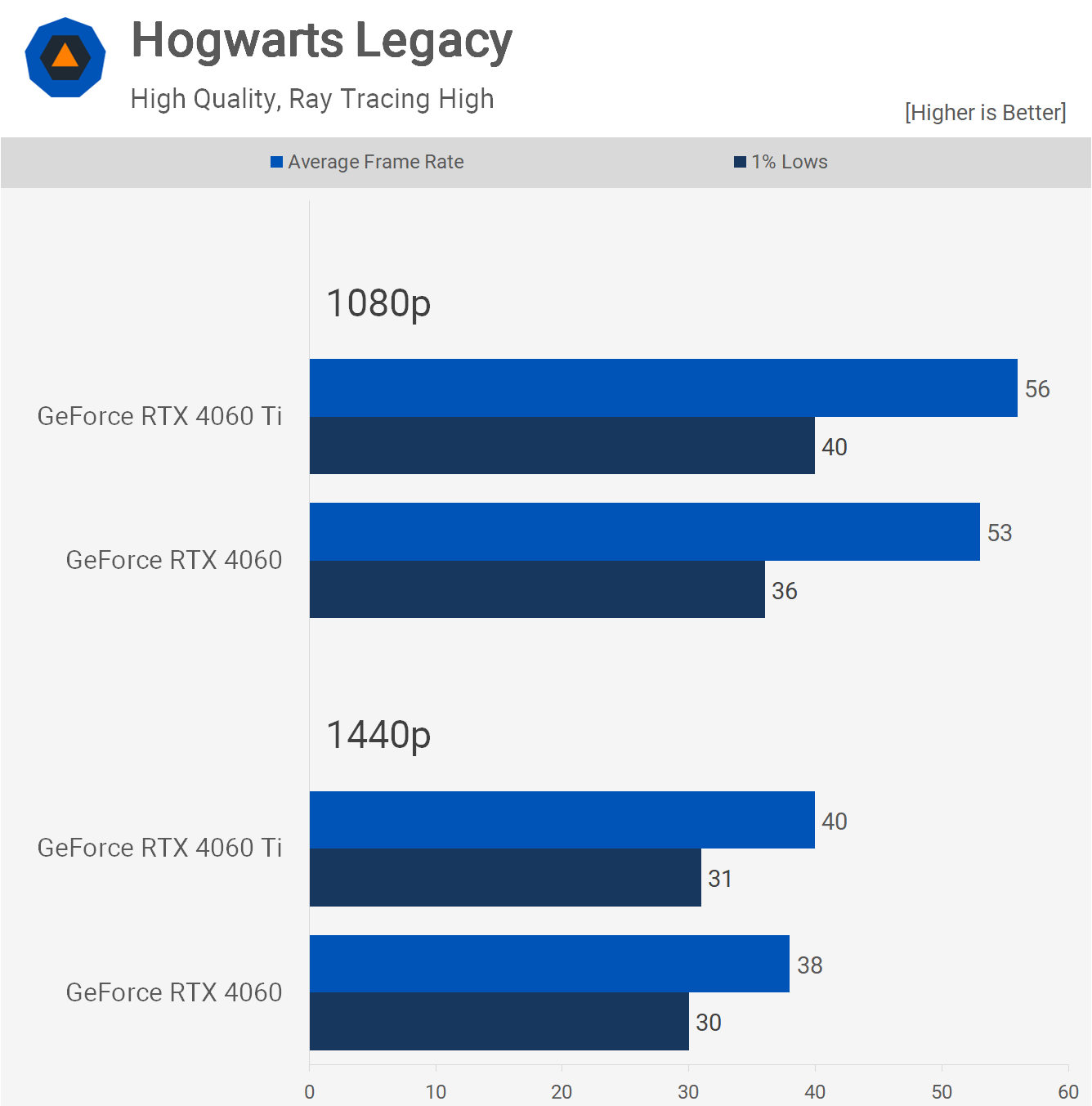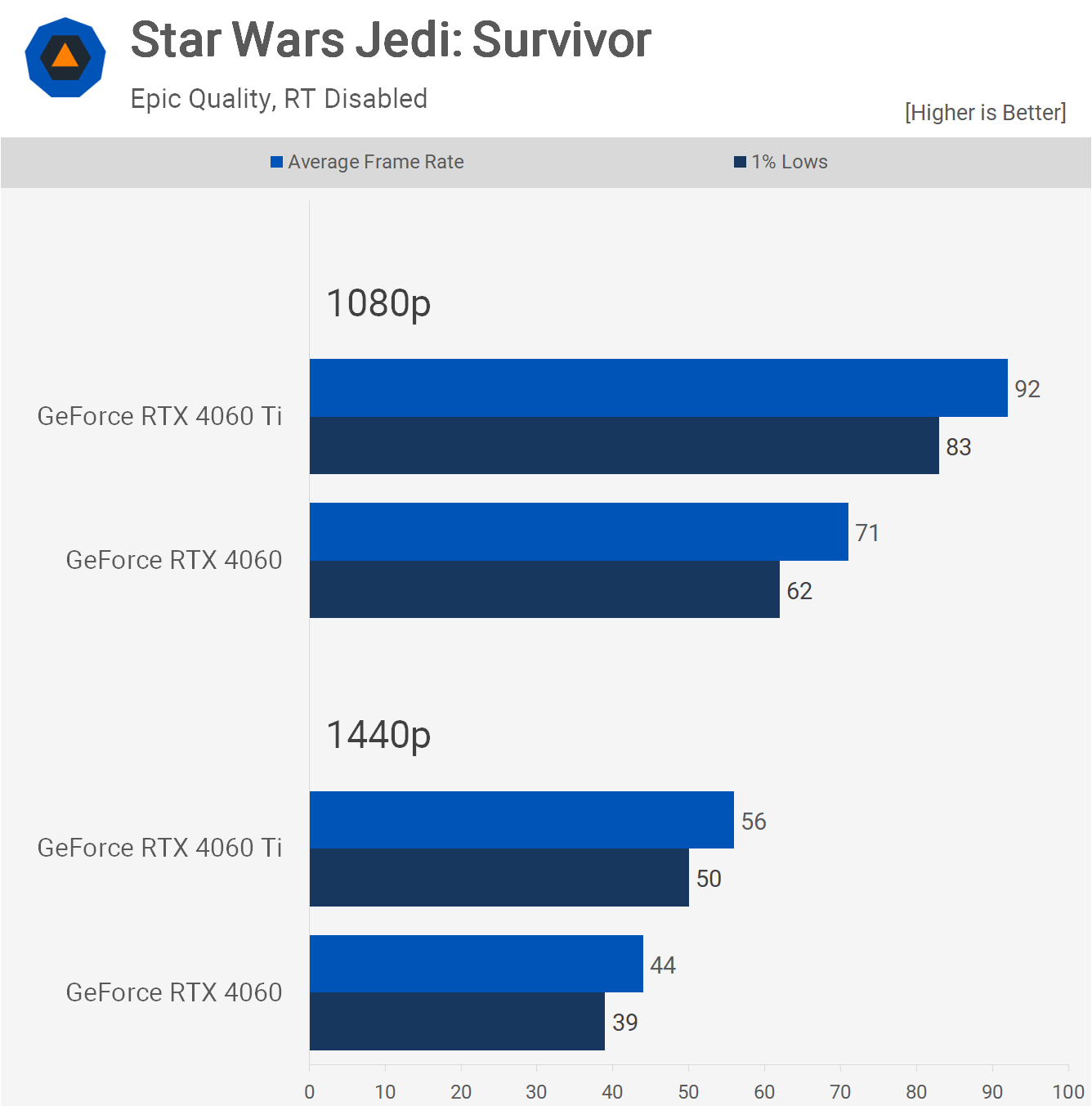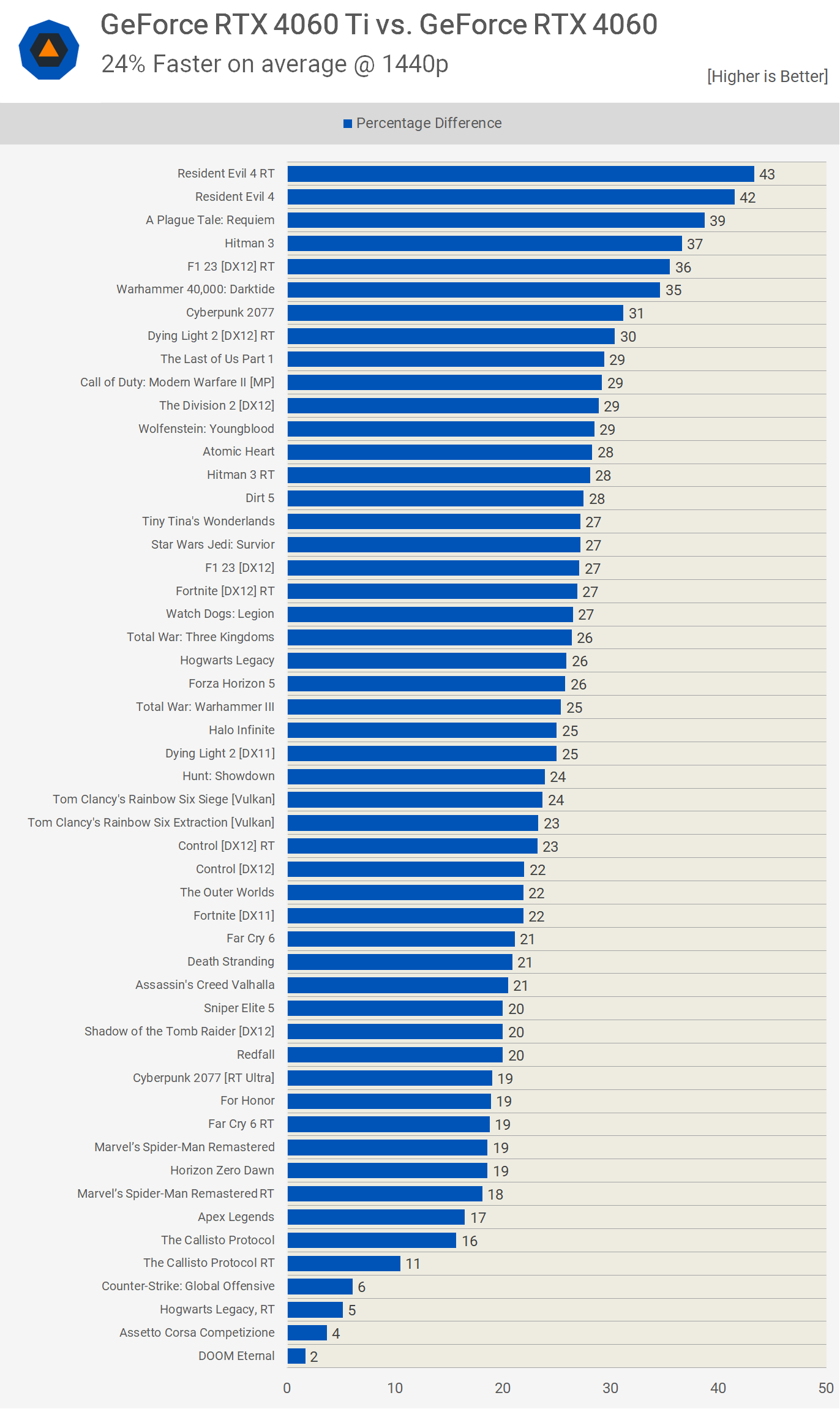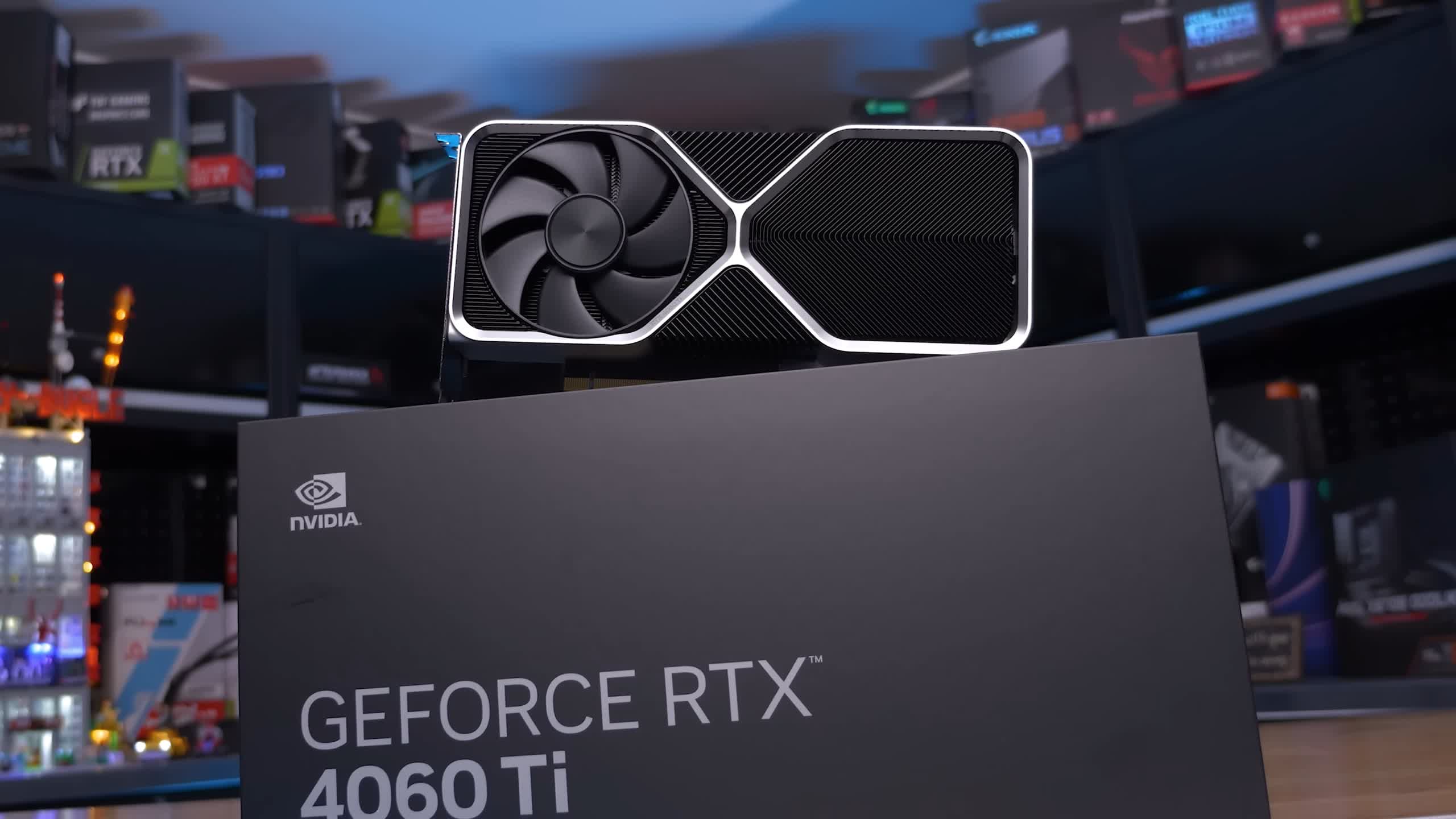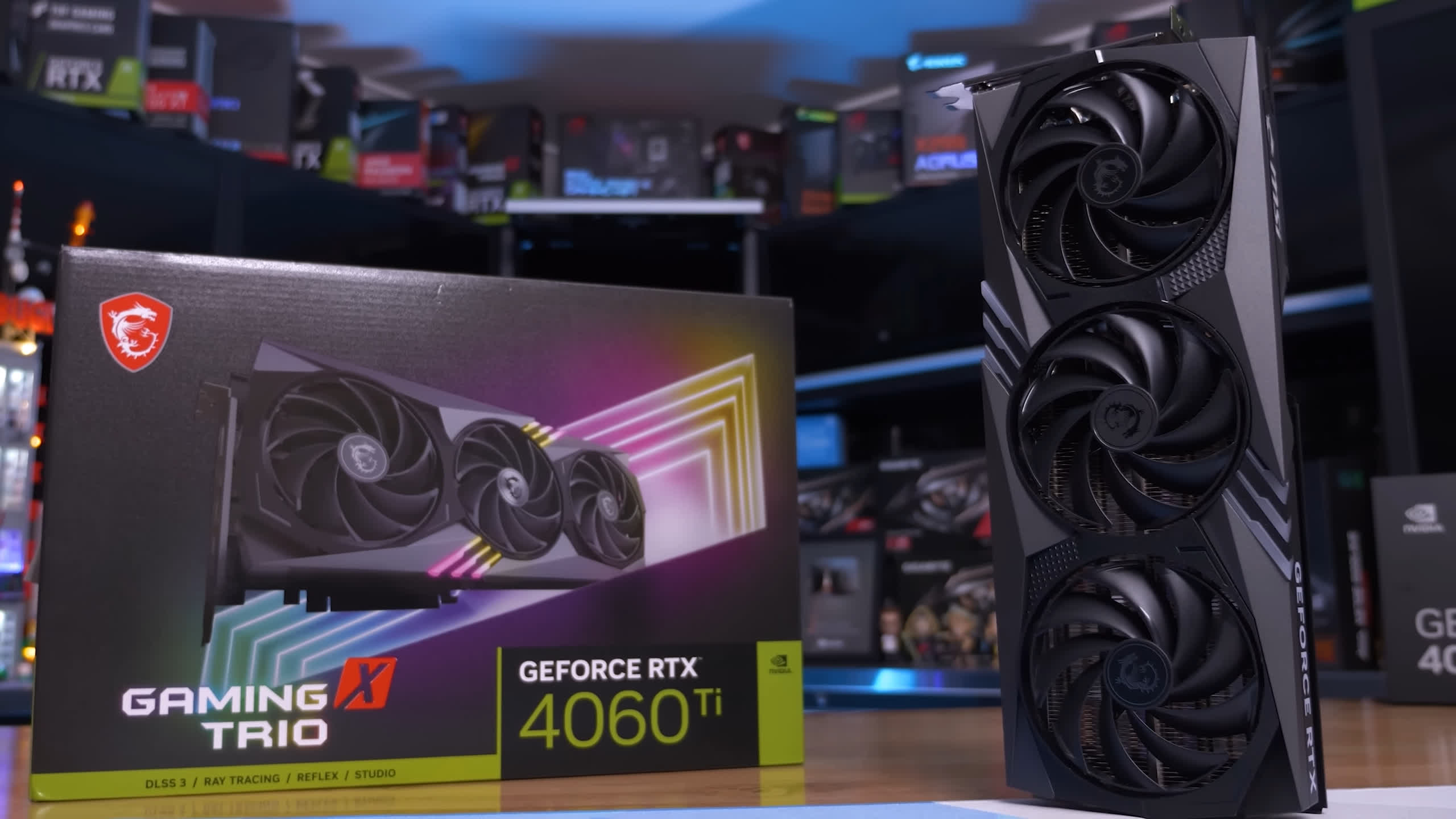Today, we're comparing the GeForce RTX 4060 with its more upscale sibling from a different silicon wafer, the RTX 4060 Ti, to determine if the Ti variant is worth the extra $100. Alternatively, should you consider saving the money and opting for the smaller die version? We will answer this question with an extensive benchmark session.
We've prepared a 40-game benchmark covering 1080p and 1440p resolutions. Additionally, we've included 10 titles which have been tested both with and without ray tracing enabled, featuring a number of recently released games as well.
As a quick recap on how these two products differ: The GeForce RTX 4060 is based on the smaller 159mm2 AD107 silicon, whereas the 4060 Ti model uses AD106, a 188mm2 duo. This means they are fundamentally two different products and don't share the same silicon. Thus, the RTX 4060 isn't merely a cutdown version of the Ti model with a few cores disabled.
As expected, the RTX 4060 is a leaner product with fewer cores and less memory bandwidth. The L2 cache capacity has been reduced by 25% to 24 MB, and with it, you're getting 29% fewer CUDA cores and Texture Mapping Units (TMUs), although the same 48 ROPs remain.
The core boost clocks have also been reduced by 3%, but the same 8GB of GDDR6 memory remains on a 128-bit wide memory bus. The vanilla 4060 uses slower 17 Gbps memory, resulting in a 6% reduction in bandwidth to just 272 GB/s.
Justifying these downgrades is a 25% reduction in price, but at $300, the GeForce RTX 4060 is still around $100 more expensive than we'd like. It's a shame, and it's why we recommend the outgoing Radeon RX 6700 XT at $320 over either of these GeForce GPUs.
However, if you don't have access to affordable RDNA2 GPUs in your region or by the time you read this review, previous-gen stock has run out, is the 4060 Ti worth buying over the standard 4060? Let's find out…
For testing, the CPU used is the Ryzen 7 7800X3D which has been paired with the Gigabyte X670E Aorus Master using 32GB of DDR5-6000 CL30 memory. As usual, we'll go over the data for around a dozen titles before jumping into the big summary/breakdown graphs. The resolutions of interest here are 1080p and 1440p, so let's get into it.
Benchmarks
Starting with Cyberpunk 2077, we find that the Ti model is 26% faster at 1080p and 31% faster at 1440p. It appears that in this example, the extra bandwidth and L2 cache of the 4060 Ti are helping to feed the additional cores at 1440p, resulting in slightly better scaling at the higher resolution.
However, when enabling ray tracing, we see scaling goes in the opposite direction. Whereas the Ti version was 29% faster at 1080p, it's just 19% faster at 1440p. Of course, neither was able to deliver playable performance, but we suspect memory bandwidth is the primary limiting factor here, and while the 4060 Ti has more of it, it doesn't appear as though the additional L2 cache is all that useful in this instance.
The Call of Duty Modern Warfare II results look fairly typical, with the 4060 Ti delivering 23% more performance at 1080p and 29% more at 1440p. So, there are some decent gains, though it's also worth noting that the Ti version does cost 33% more, so we're not exactly seeing a full return on that investment here.
A Plague Tale: Requiem plays a lot better with the 4060 Ti, as we're looking at 38% more frames at 1080p and 39% more at 1440p, so quite consistent scaling here that does make the Ti model a better value choice.
The Callisto Protocol results are interesting because here the 4060 and 4060 Ti are quite evenly matched, with the Ti version only delivering 14% more performance at 1080p and 16% more at 1440p.
We thought enabling ray tracing might hand the Ti model more of an advantage, but it was quite the opposite. Now, it's just 9% faster than the 4060 at 1080p and 11% faster at 1440p. The obvious answer here is memory bandwidth. The Callisto Protocol has to be bandwidth-starved with the 4060 series, and the extra L2 cache of the Ti version just isn't helping here.
Truth be told, both GPUs fail here because if you play the game for long enough, they eventually run out of VRAM under these test conditions, and here's an example of that using the RTX 4060 Ti. Simply put, 8GB of VRAM isn't enough to support ray tracing with the ultra-quality settings in this title, and had the 4060 Ti packed 12GB or more, you'd be seeing smooth, playable performance here, which we've demonstrated previously using the RTX A4000, which is basically a 16GB RTX 3070.
Resolution scaling in Fortnite is very consistent using the DirectX 11 mode. Here, the 4060 Ti was 21% faster at 1080p and 22% faster at 1440p. So, not great gains given the price difference, but also not the worst results we've seen for the Ti model.
The Fortnite DirectX 12 mode using RT effects is a little more favourable to the 4060 Ti, allowing it to deliver 23% more performance at 1080p and 27% more at 1440p. Still, not amazing results given the 33% increase in price, and performance overall was quite weak.
Next up, we have Resident Evil 4, and this is an interesting one. The 4060 Ti was 27% faster at 1080p, which is what we've come to expect as more of a best-case scenario. But at 1440p, it was a massive 42% faster, and it seems that the extra cache of the Ti model is helping utilize the extra cores here, as we're basically looking at perfect scaling relative to the 4060.
Enabling ray tracing sees more of this, with the 4060 Ti now 43% faster at both tested resolutions, which is, without question, a best-case result for the Ti model.
From best-case results to a more worst-case result with Marvel's Spider-Man Remastered, we find that the 4060 Ti was just 15% faster at 1080p, though that margin was extended slightly to 19% at 1440p.
With ray tracing enabled, we see more of the same. Here, the 4060 Ti was 14% faster at 1080p and 18% faster at 1440p, so very underwhelming results relative to the base model.
This is an interesting set of results. As we know, Doom Eternal is a very memory-sensitive game, primarily concerning memory bandwidth, or access to the VRAM. This is a big problem for the 4060 series and that 128-bit wide memory bus. Although performance overall looks very good, you can clearly see how bandwidth-starved these GPUs are, with the 4060 Ti and 4060 delivering almost identical performance.
Moving on to Hogwarts Legacy, we're back to what we'd say are fairly typical margins. Here, the 4060 Ti was 22% faster at 1080p and 26% faster at 1440p, so still below that 33% increase in price for the Ti model.
We find some interesting results with ray tracing enabled. Again, bandwidth is a major problem here, especially for the Ti model, and that extra L2 cache just isn't helping. In this example, the 4060 Ti was just 6% faster at 1080p and 5% faster at 1440p, so super disappointing results. This is yet another test that really highlights the problems with the 4060 Ti.
The last game we're going to look at is Star Wars Jedi: Survivor. Here, we have what is closer to a best-case result for the 4060 Ti, with a 30% performance increase seen at 1080p and a 27% increase at 1440p. So, decent gains there, but again, not quite in line with the price increase.
Performance Summary
We've just examined nearly a dozen of the 40 games tested, some with and without RT enabled. Now it's time to see how these two GPUs compare across all the games tested. So, let's proceed with that, starting with the 1080p data.
On average, the GeForce RTX 4060 Ti is 22% faster than the RTX 4060 at 1080p. The biggest win was observed in Resident Evil 4 with ray tracing enabled, with substantial gains also seen in A Plague Tale: Requiem, F1 23 with ray tracing enabled, and Darktide. Beyond those, however, we're looking at margins of less than 33%, which means the 4060 is technically the better value product in over 90% of the configurations tested.
Even more concerning for the 4060 Ti is the list of games where it's faster by 20% or less, which make up almost 40% of the configurations tested. Granted, some titles such as CSGO are CPU limited, and perhaps ACC to a degree, but most examples here are still GPU limited.
Upping the resolution to 1440p results in similar margins overall. Here, the 4060 Ti was only 24% faster on average. Again, we find games such as ACC, Hogwarts Legacy with RT enabled, and The Callisto Protocol with RT enabled pose issues for the 4060 Ti.
Bottom Line: Is the "Ti" Worth It?
So, is the "Ti" worth it? The short answer: no. Full disclaimer before we continue, we don't think either of these products are worth their current asking price, or the MSRP. However, if for some reason you were weighing between these two products, you'd be best off purchasing the standard RTX 4060 and just ignoring the more expensive Ti version.
As we've noted several times by this point, the 4060 Ti costs 33% more and while you are receiving 42% more cores and 33% more L2 cache, that's where the highlights begin and end for this Ti model.
The problems, on the other hand, begin when you start to pay attention to the memory subsystem. There's zero increase in VRAM, so it's still just 8GB and worse still, it's limited to a 128-bit wide memory bus which means there's no real increase in memory bandwidth, but a mere 6% improvement thanks to the 18 Gbps memory. The Ti model is also limited to the same PCIe 4.0 x8 interface, though that's less of an issue despite being a sub-optimal configuration.
As we saw in several game benchmarks, the limited memory bandwidth was a significant problem for the RTX 4060 Ti, and while it still held up the 4060, it was less of an issue given the 4060 is cheaper and has fewer cores to feed.
Had Nvidia not designed the 4060 Ti with such obvious memory issues, you'd see more consistent scaling between these two products. This would result in a more consistent 30-40% performance uplift over the 4060. Therefore, the 4060 Ti is a heavily compromised product, and again, while the 4060 makes all the same compromises, at a 25% discount it's a lot more forgivable, even if value overall is still quite poor.
Regrettably, the 16GB version of the 4060 Ti doesn't solve all its problems either. Generally speaking, performance is very similar and although the extra VRAM does address some of the issues, even in those examples, the resulting performance is very underwhelming at the $400 price point, but of course, the fix will cost $500, so that's simply a no-go.
In short, the GeForce RTX 4060 Ti 16GB would be an acceptable product at $350 with the 8GB model passable at $300 which would require the RTX 4060 to hit $240. Also, as a side note, pricing isn't the only issue here – really, the 4060 and 4060 Ti should be called the 4050 and 4050 Ti given their performance relative to the previous generation GeForce 30 series.
That said, we're less concerned with product names here at TechSpot and far more concerned with price to performance ratio. However, we do acknowledge that Nvidia has muddled the product names this generation to confuse consumers in a bid to upsell them without realizing they've been upsold.
Shopping Shortcuts:
- Nvidia GeForce RTX 4060 on Amazon
- Nvidia GeForce RTX 4070 on Amazon
- Nvidia GeForce RTX 4060 Ti on Amazon
- AMD Radeon RX 7600 on Amazon
- AMD Radeon RX 7900 XT on Amazon
- Nvidia GeForce RTX 4090 on Amazon
- AMD Ryzen 7 7800X3D on Amazon
Further Testing
We have written additional comparisons and run relevant benchmarks you may be interested in:
